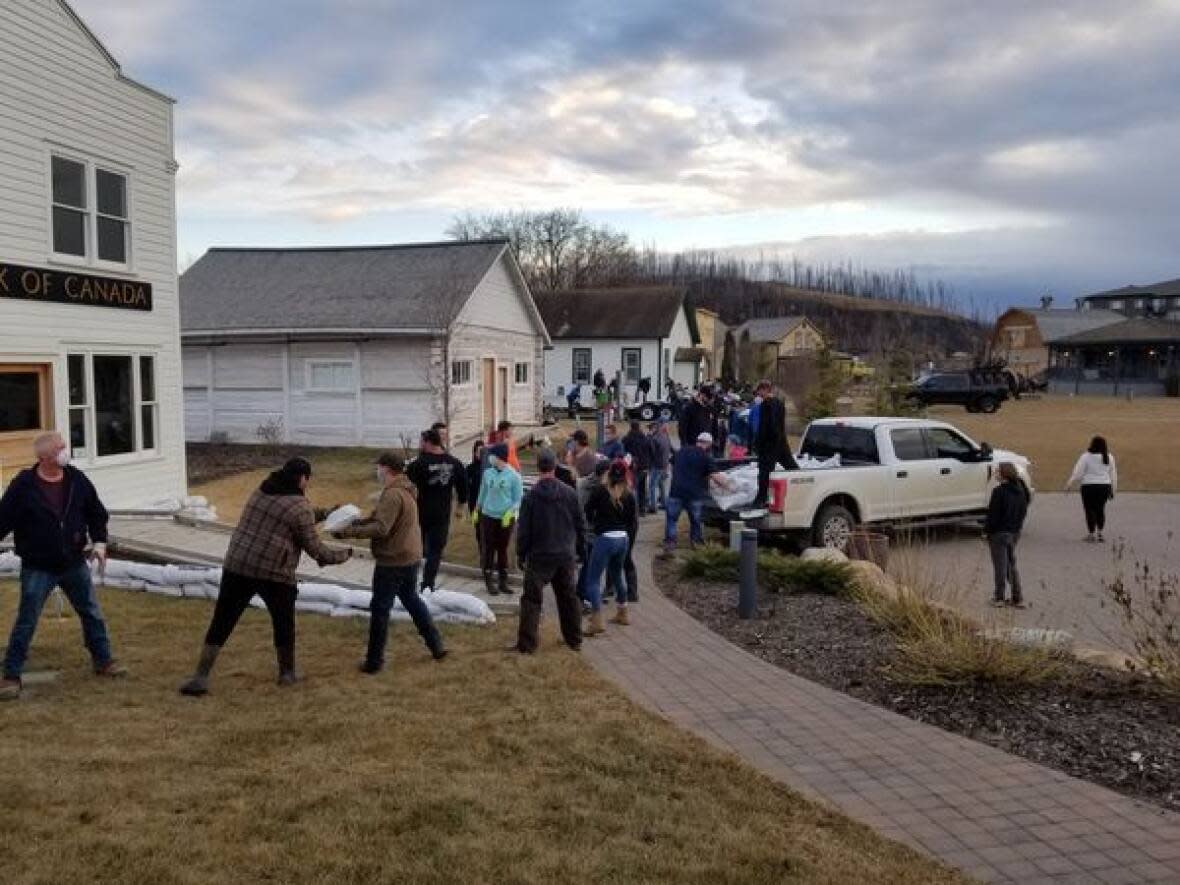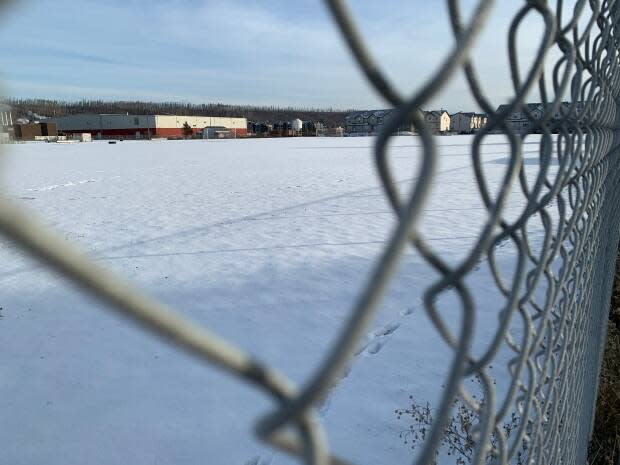Fort McMurray Heritage Society facing $2M lawsuit over flood damage to sports field

A heritage village in Fort McMurray is being sued for $2 million by the regional municipality after a sports field and a fence were allegedly damaged during the April 2020 flood.
The Regional Municipality of Wood Buffalo is suing the Fort McMurray Heritage Society, alleging the society damaged the Keyano Sports Field in 2020 by building a berm out of dirt and clay to save one of its properties.
The Fort McMurray Heritage Village — operated by the society — has a collection of buildings from Fort McMurray's past, some dating back a century. The educational village shares a fence with Keyano Field, which is owned by the regional municipality.
In November 2021, the RMWB filed a statement of claim in Court of King's Bench, claiming the berm resulted in damage to the fence between the properties and the neighbouring Keyano Field — both of which are owned by the municipality.
In March of this year, the heritage society filed a statement of defence, denying the municipality's allegations. The society said it "became concerned about the imminent and inevitable flooding of the Heritage Village."
While the RMWB is listed as the plaintiff in the lawsuit, the action is being brought by an insurer.
In a written statement to CBC, the regional municipality said it submitted a claim to its insurer for the damage to the field after the flood. The insurer filed the lawsuit under the municipality's name to recoup costs from the heritage society. The insurer, not the municipality, is in control of the litigation, a spokesperson for the municipality said.
More than $2 million in alleged damage
The municipality claims the berm affected the field's drainage, allowing water to pool on the track.
The municipality also cited at least eight specific incidents of negligence on the society's part. They included failing to get reasonably skilled volunteers to build the berm, failing to supervise the volunteers and dumping clay and dirt onto the chain link fence.

The municipality claims the heritage society didn't get permission to go onto the field to build the berm.
The alleged losses include $1.5 million in damage to the track and field, $56,700 in damage to the fence, plus costs to remove the berm, the municipality claims.
The municipality is expecting the total damages to be more than $2 million.
In its statement of defence, the heritage society said the municipality's lawsuit should be dismissed.
The society admits that it built a clay and dirt berm near the property line with the field, and in some instances the fence was part of that berm.
It said it consulted with a RMWB councillor who "expressly provided the defendant with permission to undertake construction of the berm and to enter on Keyano Field," and that a councillor and the mayor were at the site while the berm was built.
The society maintains that it didn't trespass, affect the field's drainage or cause damage to the field by operating heavy equipment, according to the statement of defence.
It also claims any damage to the field caused by heavy equipment was owned by others and not the society. And it said the municipality was partially or completely to blame for the damage to the field.
There have been significant floods in the area dating back more than 100 years.
The municipality didn't have a proper flood mitigation system in place before the April 2020 flood and was aware that a flood of that level would "overwhelm" the infrastructure that was in place and cause "serious damage", the society said in its statement of defence.

It further claims the municipality did nothing to mitigate the flood risk to the field, including not pumping water from the field, not creating drainage pathways and failing to make sure the sewer system was working.
The society also said the claim by the municipality is excessive, as the field was old and in bad shape.
"Unfortunately the lawsuit is a result of us trying to protect our village," said Verna Murphy, the society's executive director. "We've already seen increases in our insurance premiums in the last year and hopefully this won't cause that to go higher."
Last year, the society's insurance went up $13,000, and it now sits at $90,000 a year, she said.
In June 2013, there was another significant flood, and the damage to Heritage Village cost $12 million. Murphy said the village was closed for four years while it was rebuilt.
"You don't want to see that happen and have that type of closure."


